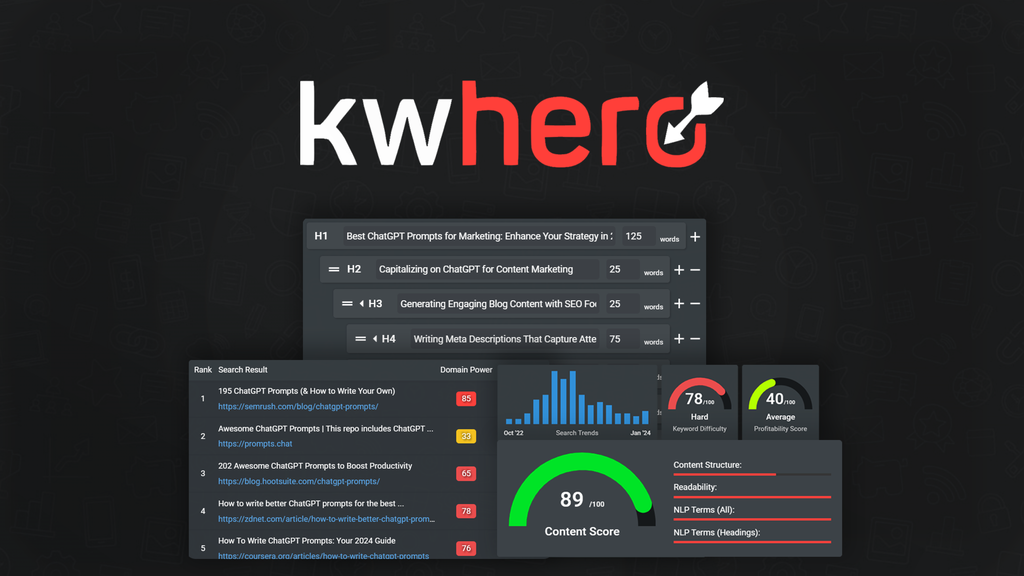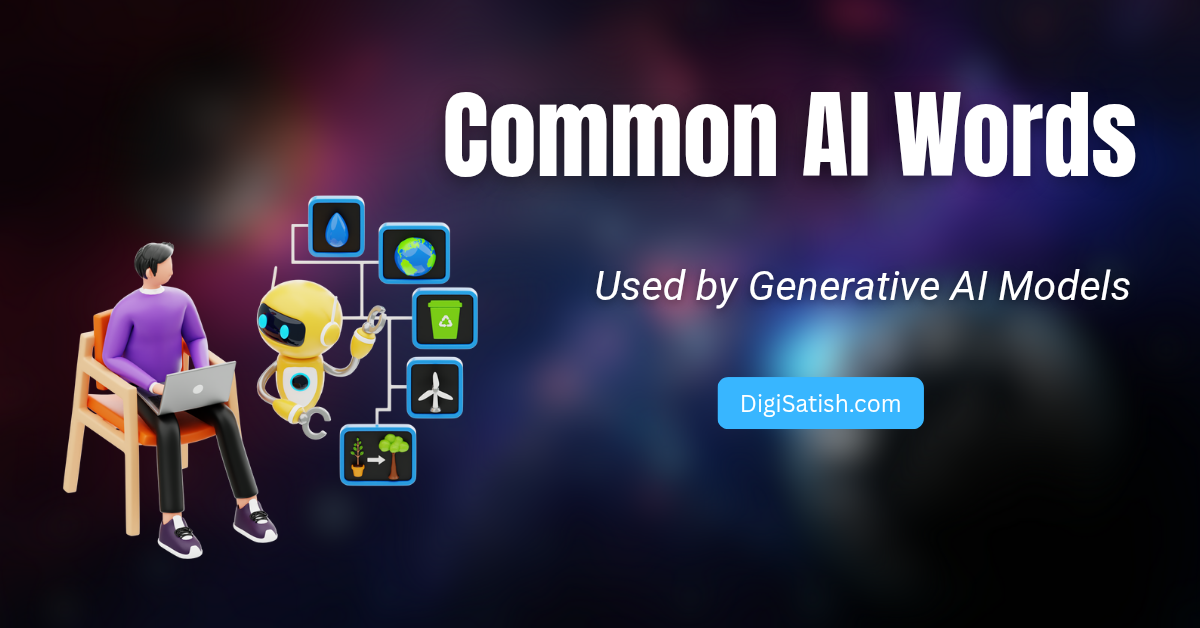Writing with AI tools like ChatGPT, Claude, Gemini, or DeepSeek can be powerful. However, without the right touch, your content might sound more like a robot than a real person. Whether you’re creating blog posts, social content, or marketing copy, it’s crucial to make your AI-generated content feel human. This is key to keeping readers engaged.
In this guide, you’ll discover the most overused, robotic-sounding words and phrases generated by AI. More importantly, you’ll learn what to use instead to sound natural, authentic, and human.

Common AI Words and Phrases to Avoid
When using generative AI models, certain phrases frequently appear because they’re built to sound formal, balanced, and context-neutral. This can be useful in academic or technical content. However, it often feels dry and robotic in blog posts, social media content, or marketing emails. These expressions can create a sense of distance between the writer and the reader. As a result, it becomes hard to build a personal connection.
For example, readers may encounter phrases like “It is important to note that.” They might also see “As an AI language model.” These break the immersion and remind them a machine is behind the words. Remove these phrases. Replace them with more human, conversational alternatives. This change can make a huge difference in how your content is received.
Humanized Alternatives That Sound Natural
The key to human-sounding writing lies in simplicity and relatability. Avoid using phrases that seem like they were taken from a college essay. Use language that mirrors how real people talk.
Take a look at these examples and Avoid these robotic phrases, and use these instead:
| ❌ Robotic / AI Phrase | ✅ Humanized / Natural Alternative |
|---|---|
| As an AI language model | (Remove it entirely) |
| In conclusion | So, to wrap it up / Here’s the takeaway |
| It is important to note | Keep in mind / Don’t miss this |
| Therefore / Hence | So / That means |
| Due to the fact that | Because / Since |
| Furthermore / Moreover | Also / Plus / Another thing is… |
| Firstly, Secondly | First / Then / One more thing |
| In today’s world | These days / Right now / Lately |
| This article will explore | Let’s dive into / Here’s what you’ll learn |
| It should be emphasized | Just say it directly |
| Clearly, this is | It’s obvious / You can see |
| In this article, we will discuss | Ever wondered how…? |
| The purpose of this blog is to | Let’s break this down… |
| According to recent studies | Real talk: people are doing this because it works |
| This paper will explore | Here’s a smarter way to… |
| It can be argued that | You could say / Some people think |
| It is worth mentioning | By the way / One thing to note |
| Recent developments have shown | Lately, we’ve seen / Things have been changing |
| A variety of factors contribute to | A bunch of things come into play |
| It goes without saying that | Obviously / Of course |
| It is widely believed that | A lot of people think / Many say |
| In light of recent events | Since things changed / After what happened |
| This raises the question | So now you might be wondering… |
| It is evident that | Clearly / You can see that |
| It is imperative to | You really should / It’s important to |
| With that being said | Still / Even so / But here’s the thing |
| In order to | To / So you can |
| Notwithstanding the fact that | Even though / Despite that |
| The aforementioned | What we just talked about / That thing I mentioned |
| At the time of writing | Right now / As of today |
| Conducted an analysis | Took a look / Dug into |
| Exhibits a tendency to | Usually / Often shows |
| Plays a pivotal role in | Is a big part of / Really matters in |
| Demonstrates the importance of | Shows why it matters |
| Presents a challenge | It’s tricky / It can be tough |
These replacements help your writing flow more smoothly and resonate better with readers. You’re building a narrative—not writing a technical manual.
Better Ways to Start Humanized Content
The way you begin your article can determine whether readers stick around or click away. Robotic introductions often use stiff phrasing. Examples include “This article will discuss…” or “In today’s modern society…” These lines are generic and lifeless.
Instead, imagine you’re starting a conversation with a friend. You wouldn’t say, “The purpose of this conversation is to inform you of the benefits of drinking water.” You’d say something like, “Did you know most people walk around mildly dehydrated and don’t even realize it?” That’s the tone you want.
Here are some better ways to open your content:
| ❌ Robotic Start | ✅ Human-Friendly Start |
|---|---|
| In this article, we will discuss | Ever wondered how…? |
| The purpose of this blog is to | Let’s break this down… |
| According to recent studies | Real talk: people are doing this because it works |
| This paper will explore | Here’s a smarter way to… |
| Readers will find that… | Here’s what you’ll get from this… |
| In the following paragraphs… | Stick with me—we’re about to break it down. |
| It can be argued that… | Some folks say… here’s what I found. |
| It is widely believed… | You’ve probably heard… but is it true? |
| The aim of this article is… | Think of this as your shortcut to [topic]. |
| We are going to learn about… | Want a better way to [solve a problem]? Let’s go. |
| To begin with… | Let’s kick things off with something surprising. |
| This content will provide… | If you’ve ever struggled with [issue], you’re not alone. |
Start strong, with emotion, a relatable anecdote, or a question. This immediately makes the reader feel like they’re part of the conversation.
Phrases to Inject Personality into Your Writing
If you want your content to sound like it came from you, not a machine, use phrases that add flavor. These expressions provide voice and warmth. These expressions give your writing a sense of personality and make it easier for readers to connect with you.
Try mixing in some of these human-friendly phrases when appropriate:
| 💬 Add Personality With… | 💡 Use When… |
|---|---|
| “Let’s be real…” | You’re making an honest, down-to-earth point. |
| “Here’s the deal…” | You’re simplifying something complex. |
| “I’ve been there.” | You’re empathizing with the reader’s pain point. |
| “This blew my mind.” | You’re sharing something surprising or exciting. |
| “No fluff, just facts.” | You’re cutting through noise or hype. |
| “You might be thinking…” | You’re addressing objections or common questions. |
| “Here’s the kicker…” | You’re building to a twist or important reveal. |
| “Real talk…” | You’re being frank or transparent. |
| “Not gonna lie…” | You’re being casual or brutally honest. |
| “Quick heads-up…” | You’re offering a warning or tip. |
| “Let me show you what I mean.” | You’re leading into an example or breakdown. |
These phrases create a conversational rhythm that keeps your readers engaged—and reminds them there’s a real person behind the keyboard.
Quick Tips to Humanize AI Content
Even small adjustments can have a big impact on the human feel of your writing. Here are some practical techniques:
- Use contractions: Contractions like “you’re,” “it’s,” and “don’t” reflect everyday speech. AI often avoids them, which can make writing sound rigid.
- Ask real questions: Questions engage readers and invite them to think. For example, “What if you could write a week’s worth of content in one day?” is much more engaging than stating a fact.
- Add emotion and opinion: Don’t be afraid to say what you think. “I love using this plugin because it saves me hours” is much more human than “This plugin is useful.”
- Vary sentence length: People don’t talk in perfectly uniform sentences. Mixing short, punchy lines with longer ones helps keep your reader’s attention.
- Drop the academic tone: Unless you’re writing for a scholarly audience, skip the jargon. Write like you’re explaining it to a friend over coffee.
Final Thoughts
AI tools are incredible writing assistants—but they don’t replace the human voice. To stand out in a sea of generic content, your writing needs to feel personal. It should be natural and engaging, especially on platforms like Medium.
Avoid robotic filler phrases and lean into your unique tone. Write like you’re having a conversation, not submitting a school assignment. The more relatable and real your content sounds, the more people will enjoy it. They will be more likely to read, comment, and share.
If you’d like a downloadable version of this guide, let me know. If you want a checklist to keep next to your writing workspace, let me know. I’m here to help you make your AI-assisted content feel more human, one paragraph at a time.
Discover more from DigiSatish
Subscribe to get the latest posts sent to your email.




